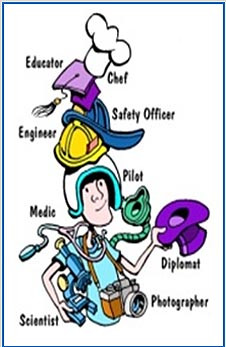The air was warm, humid, and dense. I was panting after a badminton loss. I had never been good at this, or any sport for that matter. But I liked flexing the muscles after months of home confinement. Stepping out of the stadium, a rundown building surrounded by brick walls and metal sheets, the air was a lot more pleasant. The location of the court was nice, right next to a river. An adult was sleeping on a hammock under the shade hovering over the river bank. Half a dozen of kids were swimming in the grayish water. I couldn't help but notice, on the other side of the bank, a slump area where the river was, among other things, part of their toilet and sewage. Right at that moment, it was easy to forget Saigon was a cosmopolitan of ten million residents and the engine of Vietnam’s emerging economic prowess. Under that facade, Saigon was still pretty much a part of South Vietnam - a maze of rivers, canals, and delta farmlands - and the fate of the city and the land is anything but one.
Everything seemed normal except that it shouldn’t. We just struggled the whole ordeal of a four-month lockdown. Covid was still reigning across the country. Vaccine coverage was around 30%. In the rural area, agricultural produces was left to be spoiled on the field as it would cost more to ship elsewhere. Waves of laborers retreated to their hometowns without the slightest idea of what their future looked like. Meanwhile, in the city, everything cost more and the labor shortage was high. For the first time since the stats were made available in 2000 Vietnam recorded negative economic growth of 6.17%. Real estate, stock, crypto, and even gold markets were reaching their historical records, not because of the belief of a V-shape bounce back, but because of people hiding their assets for the coming inflation once the stimulus hit.
Everything seemed normal but the substance had changed. The life of the elderly was more fragile. Break-ups and divorces rose. Worst of all, young people, including kids, were robbed of 2 years in the most important period of their lives. Covid was unprecedented. It exposed many of us to our worst enemy, change. Some could brag how embracing change was part of their DNA, but let’s be real, few people turned their life upside down for the kick of it. Changes forced people to face uncertainty, make decisions without a mental model, and live with the consequences. Take an example: kids and schools. Among people my age, the number one reason for self-enforcing isolation at home was the worry that they could bring the virus home to the kids. The local government expressed the same concern, two months after lockdown measures were eased, kindergartens and schools had yet to open. For the entire of 2021, schools had open for around 4 months. While infection risk and its impact on kids were uncertain, it has already been a certainty that the lack of interaction with same-age peers damaged the well-being of kids. Which was more critical, a 0.1% chance of infection, or a 100% chance of development impact? Reports and studies were one thing, but when it came to our lives, the choice was personal, emotional, and far from statistical. Whatever the decision, the scars left on the current generation would be slow to fade.
A few days ago, Charlie Munger stated markets were even crazier than the dot-com bubble. He might be right. Statistically, he had been right more often than he was wrong. But the same statement could be found in 2006, and then in 2015. As the world got better connected, it had been inevitable that we dealt with bigger crises impacting more people. I believe that eventually covid and its crazy variants would be over, that we would treat covid without much discrimination from its influenza cousins, and everything would seem normal again. But make no mistake, the course of the world would never be on the same trajectory had covid not happened, and normalcy is anything but a wet dream.
In the river, the kids, tired of breaststrokes, had changed their game. The older kids were hopping on a floating traffic marker on the water for big jumps, betting on who could make the biggest splash. The younger ones speculating from the safety of their bright-orange life vests. A few years ago, there would have been neither markers nor life vests. Done mourning my loss, I stepped back to the court for the next game.



